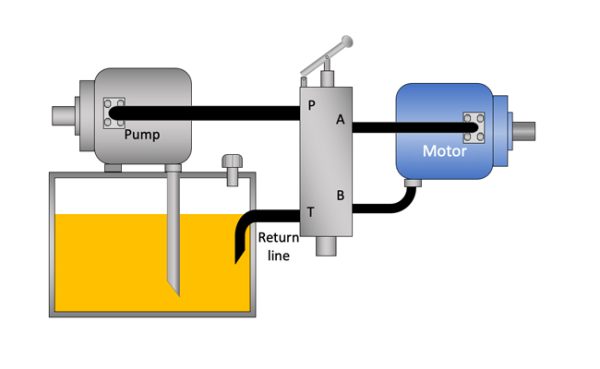Replacing Seals on Valves

Three-way and four-way mobile hydraulic multi-spool directional control valves are available as one-piece units, consisting of a single casting with multiple spools, and as modular units, consisting of multiple segments held together with through bolts. Segmented valves are commonly called “stack valves” or a “valve bank.” There are seals at the fittings and on the spools where they protrude from the valve body. There are also seals between the segments of a valve bank. High temperature can make the seals brittle and is the primary cause of seal failure on fittings and between valve segments. Temperature affects spool seals as well, but they can also fail due to over-pressure in the return line and/or contamination on the spool as it slides in and out of the valve body. When spool seals fail, fluid will be seen coming from around the spool behind the handle or from the bonnet that covers the spring chamber at the back. Fittings and valve segments commonly use O-ring seals. The spool seals may be O-rings or square-cut rings. The seals may be in SAE, British, or metric sizes. When replacing the seals, it is important that the replacement seals be the same durometer (hardness) as the original seal. Verify that the material of the seal is also the same. Due to the high operating temperature of some mobile hydraulic systems, Viton® seals may be used instead of the traditional Buna material.
Special function valves incorporated into a valve segment or bank, like the pressure relief and load check, use an O-ring boss seal. The seals on the diameter of the cartridge may have a back-up ring of nylon or Teflon® in addition to the O-ring. It is crucial that the replacement back-up ring be re-installed on the correct side of the O-ring. If possible, it is best to use a seal kit supplied by the manufacturer to prevent using the wrong-size seals. Work-port relief valves may vary in their pressure settings from one valve segment to another. When removing these function cartridges from a multi-section valve bank, ensure they are marked to prevent them from being installed in the wrong cavities after the seals are replaced.
It is sometimes difficult to identify the source of the leak in a valve bank because the leak attracts dust and dirt that both cover up and spread the oil stain. If the leak is so substantial that it washes down the side of the valve, then tracing the clean path will lead to the leak. Because there may be more than one leak, it is recommended that the whole valve be cleaned and then wiped dry before cycling the machine to observe the oil leak. Once the leak(s) has been identified, the decision must be made whether to change all the seals. It may be practical to change just the leaking seals at fittings, line connections, and cartridges. If the valve is leaking between the segments, or if the segments are separated, the seals between all the segments should be replaced.
Sectional valves may have multiple diameter and thickness O-rings between the sections. When re-assembling the valve, place the valve on a flat surface. While tightening the bolts or studs holding the valve sections together, ensure they are torqued to the specified value in the proper sequence. If possible, actuate the spools while torquing the bolts to ensure the spools are not binding. The mounting points should remain flat on the surface.

Fig. 3.29 Multi-Spool Directional Control
Valve Seals
When replacing multi-section valves, confirm the mounting pads all contact the base before tightening the valve. If they don’t mount squarely, it may be an indication the mounting base has been warped or twisted, the valve was not assembled on a flat surface, or the valve was damaged in shipping. Using the mounting bolts to pull the valve-mounting pads to the base may put stress on the sections, causing one or more of the valve spools to bind.
Replacing single-spool seals in a valve like that shown in Fig. 3.29 is justified because the seals are easy to get to and because the valve does not have to be removed and dis-assembled. Moreover, downtime will be relatively short if one or two spool seals are replaced. This is an important consideration when the machine must be returned to service after routine maintenance.
Test Your Skills
1. What should the mechanic expect to find if there is a fluid leak from a stack valve like that shown in Fig. 3.29 where the spool protrudes to connect to the operating handle?
A. Bent valve spool.
B. Leaking spool seal.
C. Broken valve spool.
D. Stuck directional control valve.
E. Cylinder that drifts holding a load.
2. When replacing one valve section of a multi-section directional valve, it is necessary to:
A. Replace the seals between all the sections.
B. Replace the seals next to the section being replaced.
C. Replace the seals that fall out during the replacement process.
D. Replace the seals in the pressure pathway of the valve.
E. Replace the seals between sections that came apart during the replacement.







